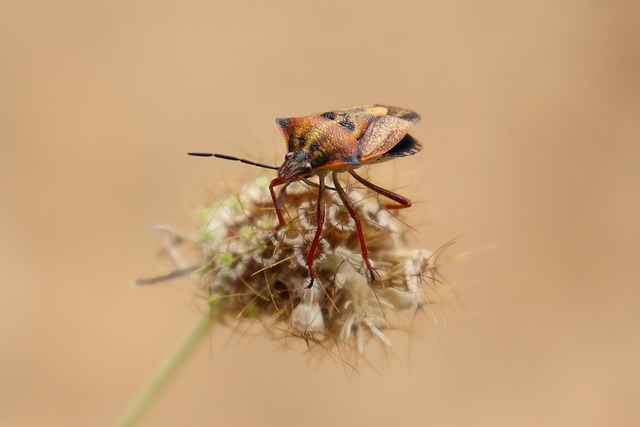Psocids, or book lice, require a multi-pronged approach for effective pest control. This includes regular inspections, cleaning, sealing entry points, and implementing integrated pest management (IPM) strategies. Key measures involve maintaining cleanliness, preventing humidity issues, vacuuming regularly, dusting, applying residual insecticides in hard-to-reach areas, and conducting routine inspections every three months by trained professionals. Continuous monitoring and quick response mechanisms are crucial to identifying early signs of infestation and preventing spread, ensuring a clean and healthy environment through proactive psocid control.
Psocids, or book lice, can infiltrate and devastate spaces, from libraries to offices. Understanding these tiny invaders and their impact is crucial in implementing effective pest control strategies. This article delves into comprehensive solutions, guiding you through developing a robust plan, conducting regular maintenance checks, and establishing continuous monitoring systems with quick response mechanisms. Discover how proactive measures ensure psocid-free environments using tailored pest control methods.
Understanding Psocids and Their Impact on Spaces
Psocids, also known as book lice or spider mites, are tiny insects that can have a significant impact on various spaces, from homes to commercial buildings. Despite their diminutive size, they multiply rapidly and feed on starchy materials like paper, textiles, and even wall paint. Their presence can lead to damage to structures and personal belongings, creating an unsightly and unhealthy environment.
Regular pest control for psocids is essential to maintaining a psocid-free space. These insects are elusive and often go unnoticed until their population grows, making early detection crucial. Effective maintenance programs involve routine inspections, prompt cleaning, and the use of integrated pest management (IPM) strategies. By combining regular vacuuming, removing potential food sources, sealing entry points, and applying targeted treatments when necessary, spaces can be effectively protected from psocid infestations.
Developing an Effective Pest Control Strategy
Developing a comprehensive pest control strategy is paramount in maintaining a psocid-free environment. The first step involves identifying the specific species of psocids infesting the space, as different types may require tailored approaches. This knowledge enables the selection of appropriate insecticides and baits, ensuring their effective use without causing harm to non-target organisms or contributing to environmental contamination. Regular inspections are crucial to monitoring the success of control measures and identifying any new infestations early on.
Integrated Pest Management (IPM) principles should guide the strategy, emphasizing prevention, monitoring, and targeted treatment. Preventative measures include maintaining cleanliness, sealing entry points, and regulating humidity levels to deter psocids. Regular vacuuming and dusting remove eggs and adults, while applying residual insecticides in hard-to-reach areas can disrupt breeding cycles. By combining these tactics, a sustainable and environmentally conscious pest control program for psocids can be established.
Implementing Regular Maintenance Checks
Implementing regular maintenance checks is a critical component of any successful psocid-free space strategy. These routine inspections should be conducted by trained professionals to identify and address potential entry points, nest sites, or signs of psocid activity early on. By establishing a consistent schedule—say, every three months—you create a proactive approach to pest control for psocids, as it allows for the early detection and prevention of infestations before they escalate.
During these checks, experts will thoroughly assess areas prone to psocid attraction, such as hard-to-reach corners, cracks, and crevices. They’ll also inspect items like stored goods, furniture, and landscaping features for any signs of psocids or their fecal matter, which can indicate an ongoing presence. This proactive pest control method not only keeps spaces psocid-free but also saves time and resources compared to reactive measures taken after an infestation has already taken hold.
Continuous Monitoring and Quick Response Mechanisms
Effective pest control for psocids involves continuous monitoring and quick response mechanisms. Regular inspections are crucial to identifying early signs of an infestation, such as webbing or small insects, which can be challenging to detect in their initial stages. By implementing a robust monitoring system, facilities can stay ahead of psocid populations before they escalate.
Quick response teams, equipped with specialized training and tools, play a vital role in addressing any identified issues promptly. This proactive approach ensures that even subtle signs of infestation are treated immediately, preventing the spread and reducing the need for extensive decontamination measures. Such mechanisms contribute to maintaining psocid-free spaces by fostering a culture of vigilance and swift action.
Maintaining a psocid-free environment requires a comprehensive approach that combines education, proactive strategies, and consistent monitoring. By understanding the impact of these tiny insects and implementing regular maintenance checks, facilities can effectively prevent and manage psocid infestations. Continuous surveillance, coupled with quick response mechanisms, ensures a robust pest control strategy for these persistent pests. Adopting such measures is key to creating and preserving spaces that are not only hygienic but also free from the relentless invasion of psocids.
